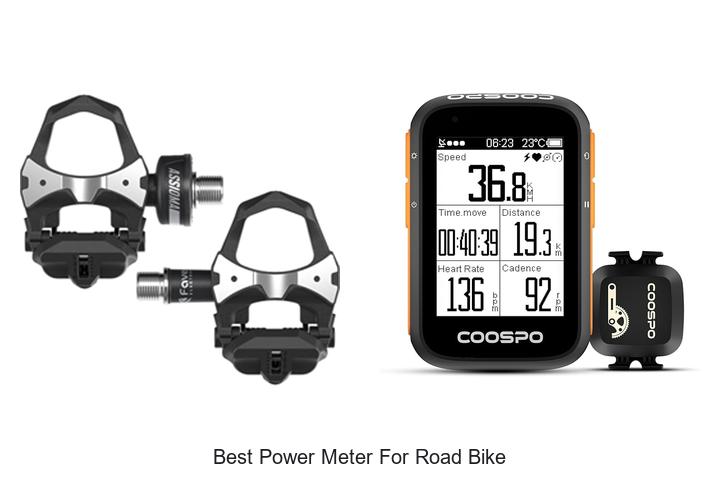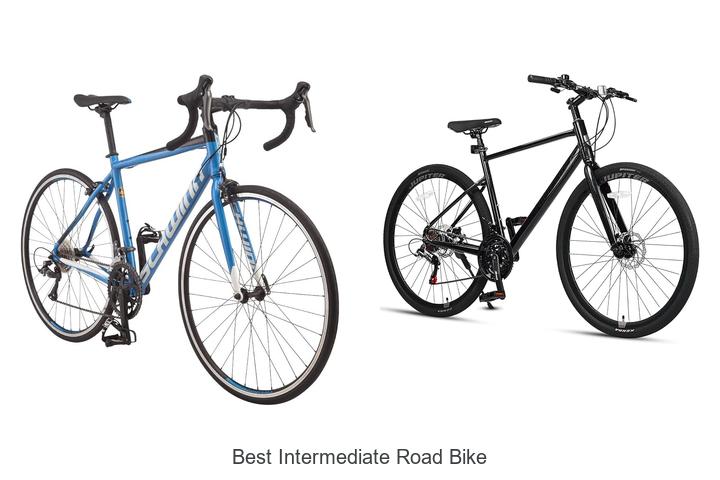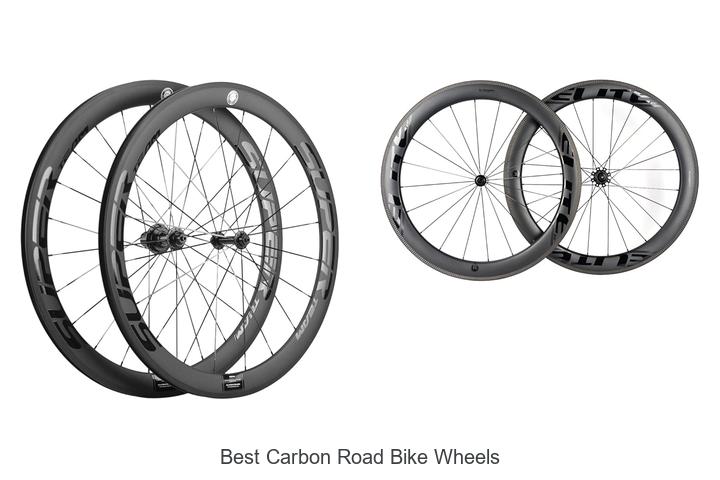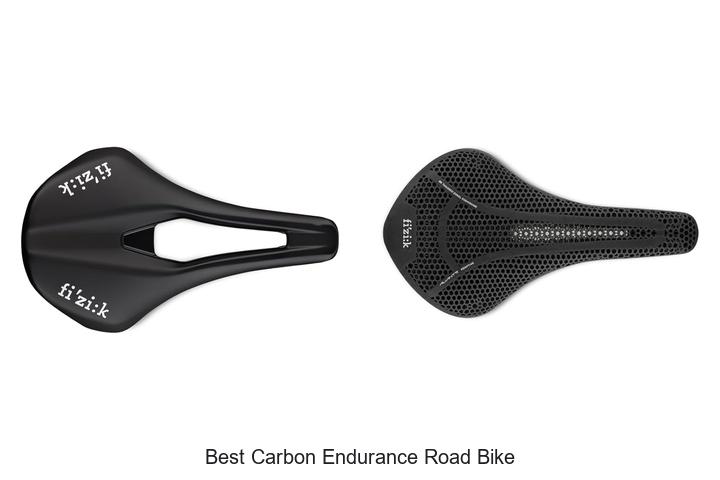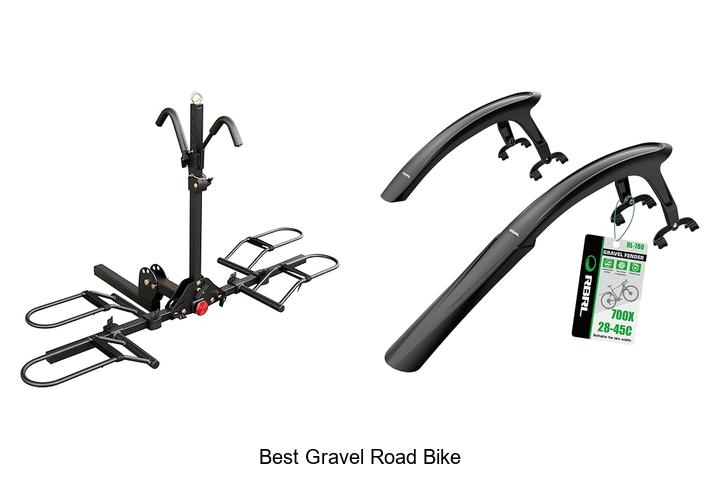Uncover the Best Power Meter for Road Bikes Now!
In the world of competitive cycling, terms like watts, cadence, and performance metrics are more than just jargon; they are the essence of strategic training and racing excellence. As cyclists aim to optimize their power output and efficiency, selecting the best power meter for a road bike becomes crucial in transforming data into actionable insights. From measuring torque and pedal-stroke dynamics to ensuring seamless compatibility with cranksets and bike frames, the precision of a power meter can redefine a cyclist’s approach to training regimes and race-day strategies.
However, the market is flooded with diverse options, each promising to elevate your performance analytics. So, how do you discern the true innovators from the rest?
Our deep dive uncovers the essentials you need to make an informed decision.
Pedal Precision: Discover Top Choices for Cyclists
| Image | Product | Price |
|---|---|---|
Pick 1  | Assioma UNO Side Pedal Based Power Meter | Check Price On Amazon |
Pick 2  | COOSPO Bike Computer Wireless GPS, Bike Speedometer with Auto Backlight, | Check Price On Amazon |
Pick 3  | Assioma Duo Side Pedal Based Power Meter | Check Price On Amazon |
1. Assioma UNO Side Pedal Based Power Meter

Unlock your full cycling potential with the Assioma UNO Side Pedal Based Power Meter, the pinnacle of precision and performance for road cyclists. Seamlessly integrating with your bike and devices, it provides accurate data to enhance every ride, making it the best power meter for road bike enthusiasts seeking reliability and efficiency.
The Assioma UNO Power Meter, with its easy installation and superior technology, measures every pedal stroke with precision. With 50 hours of rechargeable battery life and compatibility with both Bluetooth and ANT+, it’s designed for serious cyclists who demand top-tier functionality effortlessly.
Pros
- Effortless setup and calibration.
- Long-lasting rechargeable battery with 50 hours of use.
- Seamless connectivity with Bluetooth and ANT+.
Cons
- Initial investment cost.
Overall, the Assioma UNO Side Pedal Based Power Meter stands out for its accuracy and convenience. While pricier than some alternatives, its advanced features and reliability justify the cost, offering an unparalleled riding experience for dedicated road cyclists.
2. COOSPO Bike Computer Wireless GPS, Bike Speedometer with Auto Backlight,

Enhance your cycling experience with the COOSPO BC200 Bike Computer, a perfect companion for serious cyclists seeking the best power meter for road bike performance. With its robust features and affordability, this wireless GPS bike computer simplifies navigation and performance tracking on every ride.
Compact yet powerful, the COOSPO BC200 features a 6-inch LCD display with an auto-backlight for easy visibility. Boost your performance with crucial metrics like altitude, slope, temperature, and cycling power.
The device boasts a marvelous 36-hour battery life and is IP67 waterproof, ensuring reliability in all conditions.
Pros
- Comprehensive data tracking including cadence, distance, and power.
- Long-lasting 1200mAh battery for extended rides.
- Easy data sync with popular apps like Strava via USB or CoospoRide App.
Cons
- Setup instructions could be clearer; better suited for tech-savvy users.
In sum, the COOSPO BC200 Bike Computer bundle offers outstanding value for cyclists looking for comprehensive data analysis and dependability at an affordable price. Competing devices may offer similar features, but COOSPO’s combination of performance tracking and usability makes it a standout choice.
3. Assioma Duo Side Pedal Based Power Meter

The Assioma Duo Side Pedal Based Power Meter by Favero redefines precision in cycling performance. Known as the best power meter for road bikes, it offers intuitive installation and exceptional dual-side measurement, empowering cyclists to optimize their rides with real-time data.
This Italian-engineered marvel is a cyclist’s essential companion for seamless pedaling dynamics.
Favero’s Assioma Duo features state-of-the-art cycling technology, integrating effortlessly with both Android and iOS devices. Its rechargeable batteries promise up to 50 hours of usage, maximizing every ride with accurate performance data. Crafted from robust aluminum, it’s available in sleek black and silver finishes.
Crafted from robust aluminum, it’s available in sleek black and silver finishes.
Pros
- Easy installation and transferability between bikes.
- Comprehensive left/right balance insights for tailored training.
- Long-lasting battery life with quick recharging capability.
Cons
- Slightly higher price compared to single-sided variants.
Overall, the Favero Assioma Duo is a top-tier choice for serious cyclists aiming to enhance their performance. Although more costly than its single-sided counterparts, its dual-side functionality and precision make it a worthwhile investment for those committed to achieving cycling excellence.
4. Favero Assioma PRO RS-2, Dual-Sensing Side Pedal Based SPD-SL Road

Experience unparalleled cycling performance with the Favero Assioma PRO RS-2 Pedal-Based Power Meter. Revered as the best power meter for road bikes, it offers precision power measurement and effortless compatibility with Shimano SPD-SL cleats, ensuring every pedal stroke is counted and analyzed for peak performance.
Designed with dual-sensing technology, this power meter seamlessly integrates with your bike, providing accurate wattage readings and consistency with an impressive ±1% precision. The modular design allows quick pedal body swaps, making it ideal for diversifying between road and MTB cycling setups.
Pros
- Universal SPD-SL compatibility for versatile use.
- High precision with Automatic Temperature Compensation.
- Convenient rechargeable battery with up to 60 hours of use.
Cons
- Premium price point at $829.
In conclusion, the Favero Assioma PRO RS-2 sets a new standard in power meters, blending advanced tech with rider-friendly features. While its cost is higher compared to other models, such as single-sensing meters, the dual-sensing capability and precision offer unparalleled value for serious cyclists.
5. Garmin Wireless Bike Speed Sensor 2 and Cadence Sensor 2

Revolutionize your cycling experience with the Garmin Wireless Bike Speed Sensor 2 and Cadence Sensor 2, the best power meter for road bikes. Crafted to provide precise insights into your speed, distance, and pedal cadence, this cutting-edge technology ensures that every ride is optimized for peak performance.
The speed sensor attaches effortlessly to any wheel hub, offering accurate readings without the need for an external head unit. The cadence sensor, suitable for any crank arm, tracks pedal strokes per minute to fine-tune your training regime.
Seamlessly connect with compatible Garmin devices and training apps via Bluetooth and ANT+ compatibility.
Pros
- Easy installation and seamless synchronization with Garmin devices.
- Precise real-time data on speed and cadence for performance optimization.
- Compact, lightweight design ensures no additional bulk on your bike.
Cons
- Requires four lithium metal batteries, which are included but need occasional replacement.
For cyclists aiming to achieve more on every ride, the Garmin Speed Sensor 2 and Cadence Sensor present unmatched accuracy and convenience. Compare to similar devices, it stands out for its easy installation and comprehensive connectivity.
Priced at $69, it’s an invaluable tool for serious cyclists.
6. Favero Assioma PRO RS-1, Single-Sensing Side Pedal Based SPD-SL Road

Transform your cycling performance with the Favero Assioma PRO RS-1, the best power meter for road bikes available today. Combining cutting-edge technology with effortless compatibility, this pedal-based meter enhances your training by providing accurate data to maximize your fitness goals.
Favero’s innovative Assioma PRO RS-1 features a single-sensing pedal power meter compatible with SPD-SL systems. Easy to install and transfer between bikes, it offers Bluetooth and ANT+ connectivity for seamless integration with various cycling apps and devices, and its rechargeable battery delivers over 60 hours of use on a single charge.
Pros
- Universal SPD-SL compatibility for versatile use.
- High accuracy with ±1% precision using IAV Power & Gyroscope technology.
- Sustainable rechargeable system ensures long-term utility.
Cons
- High initial investment at $499 may not fit all budgets.
Overall, the Favero Assioma PRO RS-1 stands out with its modular design and precise data feedback, making it a top choice for cyclists seeking to elevate their training. While the price may be a consideration, the long-term benefits and exceptional performance justify the investment for serious road biking enthusiasts.
7. RAVEMEN FR300 Compatible with Garmin/Wahoo Bike Computer, 300 Lumen Warning

Experience exceptional road safety and performance with the RAVEMEN FR300, engineered for compatibility with Garmin and Wahoo bike computers. Offering unparalleled visibility day or night with 300 lumens, this light ensures you stand out in traffic, providing a reliable, sleek, and affordable solution for every cycling enthusiast.
The FR300 is crafted with convenience and efficiency in mind, featuring an easy-to-check power level, versatile mounting options, and impressive IPX6 waterproof durability. Its lightweight design, combined with a powerful lithium polymer battery, makes it an ideal choice for long rides, offering peace of mind and enhanced safety on the road.
Pros
- Optimized visibility with 300 lumens and multiple modes.
- Seamlessly compatible with Garmin and Wahoo bike computers.
- Durable and lightweight with IPX6 waterproof protection.
Cons
- Not compatible with all Wahoo models, specifically Wahoo Element Bolt.
For cyclists seeking the best power meter for road bikes, the RAVEMEN FR300 offers significant value at a competitive price point of $ It’s a standout option in its category, ensuring both practical functionality and enhanced safety, making it a must-have for dedicated bikers.
8. Wahoo Speedplay Zero Pedal System

For avid cyclists seeking optimal power transfer and durability, the Wahoo Speedplay Zero Pedal System emerges as a standout choice. Its innovative design offers confidence and peak performance, catering to both professional riders and cycling enthusiasts, making it arguably the best power meter for road bike enthusiasts.
The Wahoo Speedplay Zero boasts a minimalist stack height for superior power transfer and a robust stainless steel construction ensuring long-lasting use. Its 3-axis adjustability offers a personalized commitment to pedaling efficiency, allowing cyclists to fine-tune their riding posture for better biomechanical alignment and enhanced overall performance.
Pros
- Minimal stack height for efficient power transfer
- Secure, dual-sided pedal-cleat connection
- Customizable fit with 3-axis adjustability
Cons
- Requires practice to master the release technique
The Wahoo Speedplay Zero Pedal System provides an edge in performance, making it a reliable partner on the road. It stands apart from other systems due to its customizability and secure engagement, ensuring that every ride feels efficient and seamless. Whether a seasoned racer or a cycling enthusiast, this pedal system empowers your journey.
Whether a seasoned racer or a cycling enthusiast, this pedal system empowers your journey.
Unleash Your Cycling Potential: Discover the Best Power Meter for Road Bikes
Battery life and maintenance
Evaluating how a toy adapts or integrates with other products can significantly enhance its usability and long-term value. Toys that are designed to integrate well with various other items can offer extended play opportunities, stimulate creativity, and automatically adapt as a child’s interests evolve.
This adaptability not only maximizes the learning potential by allowing children to combine different concepts and skills but also ensures that the investment in the toy continues to delight as new pieces are added, encouraging sustained engagement. Furthermore, the ability to integrate with other toys fosters social connectivity, enabling children to enjoy interactive play with siblings and peers, thus developing important social and collaborative skills.
This forward-thinking approach towards adaptability keeps a toy relevant and exciting over time, making it a worthwhile addition to a child’s collection.
Types of power meters
Toys that can seamlessly adapt or integrate with other products significantly enhance their value and usability. This adaptability not only maximizes playtime but also encourages creativity and sustained interest in young children as they explore various ways to interact with their toys.
This can lead to the creation of more complex play scenarios, which foster critical thinking and problem-solving skills. Additionally, toys that work well with existing products can be more economical, allowing parents or gift-givers to gradually build a cohesive and engaging collection over time.
Evaluating how a toy integrates with other products ensures that it will remain relevant and enjoyable, offering long-term benefits both in entertainment and in educational development for children.
Compatibility
Evaluation of how a toy adapts or integrates with other toys or products plays a crucial role in maximizing both playtime enjoyment and developmental benefits for young children. Toys that can be easily combined with others offer an opportunity for kids to expand their imaginations and project their creativity across a broader landscape.
Moreover, by connecting different sets or brands, children can enjoy more versatile and prolonged engagements, creating a richer and more varied play experience. For instance, building sets or railroad tracks that are designed to work together can enhance problem-solving skills and facilitate an understanding of how different components can fit and work in harmony. Such adaptability not only provides more value for a single product but also encourages cooperative play among children, allowing them to learn the importance of teamwork.
This approach favors the development of social skills and collaborative efforts, naturally fostering a child’s ability to integrate various pieces or themes to explore new scenarios and stories within their play environment.
Accuracy and reliability
Evaluating how a toy adapts or integrates with other products enhances its value by promoting versatility and prolonged engagement for young children. Toys that are designed to work seamlessly with other items in your child’s collection can provide an opportunity for expanded play scenarios. This adaptability often encourages creativity, aiding in cognitive development as children learn to mix and match different toys to create new experiences.
This adaptability often encourages creativity, aiding in cognitive development as children learn to mix and match different toys to create new experiences. Moreover, toys that integrate well with others can often grow with your child, providing opportunities for complex play as they become more sophisticated in their interactions. Integration also supports social play, inviting friends or siblings to join in, thus fostering cooperation and communication skills.
Ensuring that a toy is compatible with existing products also means getting more mileage from each purchase, preventing them from being sidelined quickly and encouraging sustainable use. Lastly, adaptable toys can often lead to a more organized play area, as they tend to be part of cohesive sets or systems, reducing clutter and promoting easy storage solutions.
Connectivity and data integration
Evaluating how a toy adapts or integrates with other products enhances its value and usability by encouraging creativity and prolonged engagement from young children. Toys that mesh seamlessly with existing playsets or systems allow for a more expansive play environment, fostering imaginative play and collaborative interactions.
Integrated toys can build on existing collections, encouraging children to explore new scenarios and use their innovation with different elements in combination. Furthermore, toys that support such adaptability often invite interactive play, motivating kids to discover how different components work together, which is crucial for cognitive development. This synergy not only maintains interest over time but also helps build essential skills such as problem-solving and cooperative play.
Additionally, toys that adapt easily with others are frequently designed with future updates or expansions in mind, offering enduring value as children grow and their interests evolve.
Frequently Asked Questions (FAQs)
How Do Different Power Meters For Road Biking Compare In Terms Of Accuracy And Reliability?
Different power meters for road biking vary in accuracy and reliability due to factors like sensor technology, installation position, and calibration methods; higher-end models typically offer better precision and consistency. Generally, pedal-based and crank-based systems are considered more accurate and reliable compared to hub-based or chainring-based alternatives.
What Are The Top-Rated Power Meters For Road Bikes In 2023?
As of 2023, the top-rated power meters for road bikes include the Garmin Rally Series, the Quarq DZero, and the Favero Assioma Duo. Each offers reliable power measurement and advanced connectivity features, catering to both professional and amateur cyclists.
Are Single-Sided Or Dual-Sided Power Meters Better For Road Cyclists, And Why?
Dual-sided power meters are generally better for road cyclists because they provide more accurate and detailed data by measuring power output from both legs, helping identify and address any imbalances. However, for those on a budget, single-sided meters offer a more affordable way to monitor performance with a reasonable degree of accuracy.
What Factors Should Cyclists Consider When Choosing A Power Meter For Their Road Bike?
Cyclists should consider factors such as compatibility with their bike components, precision and accuracy of measurement, connectivity with devices or apps, as well as budget and ease of installation. Additionally, they should evaluate whether they want left-only, right-only, or dual-sided power measurement to suit their specific training needs.
How Do Installation And Compatibility Vary Among Popular Power Meters For Road Bikes?
Installation and compatibility of power meters for road bikes vary significantly, with some models like crank-based systems requiring specific cranksets, while pedal-based power meters are generally more versatile and easier to install across different bikes. Cyclists should ensure their chosen power meter is compatible with their bike’s components, including the bottom bracket, crank arm length, and pedal system, to ensure proper functionality.
Final Thoughts
In summary, when searching for the best power meter for a road bike, prioritize accuracy, compatibility, and ease of installation. Popular choices include the dual-sided Garmin Vector 3, renowned for precision, and the Quarq DZero, valued for its reliability. Choose one that fits your budget and biking needs to enhance performance monitoring and training outcomes.
Choose one that fits your budget and biking needs to enhance performance monitoring and training outcomes.
